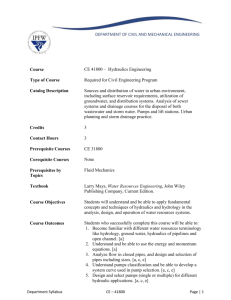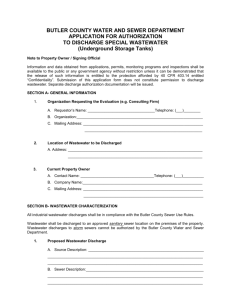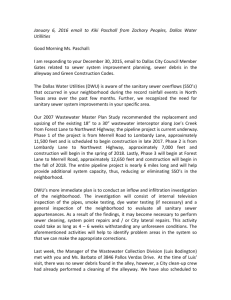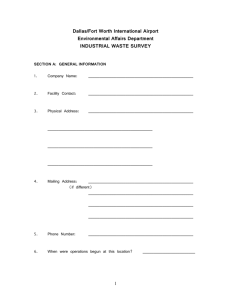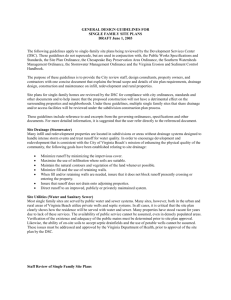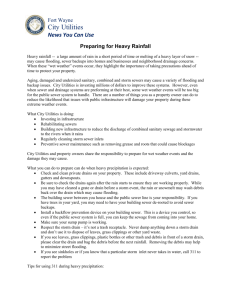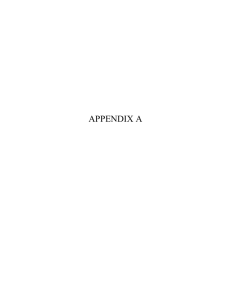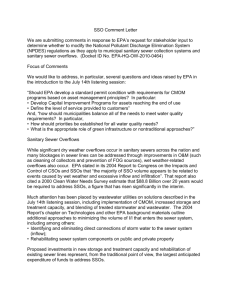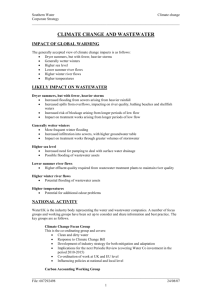Chapter 6 Urban Hydrology
advertisement
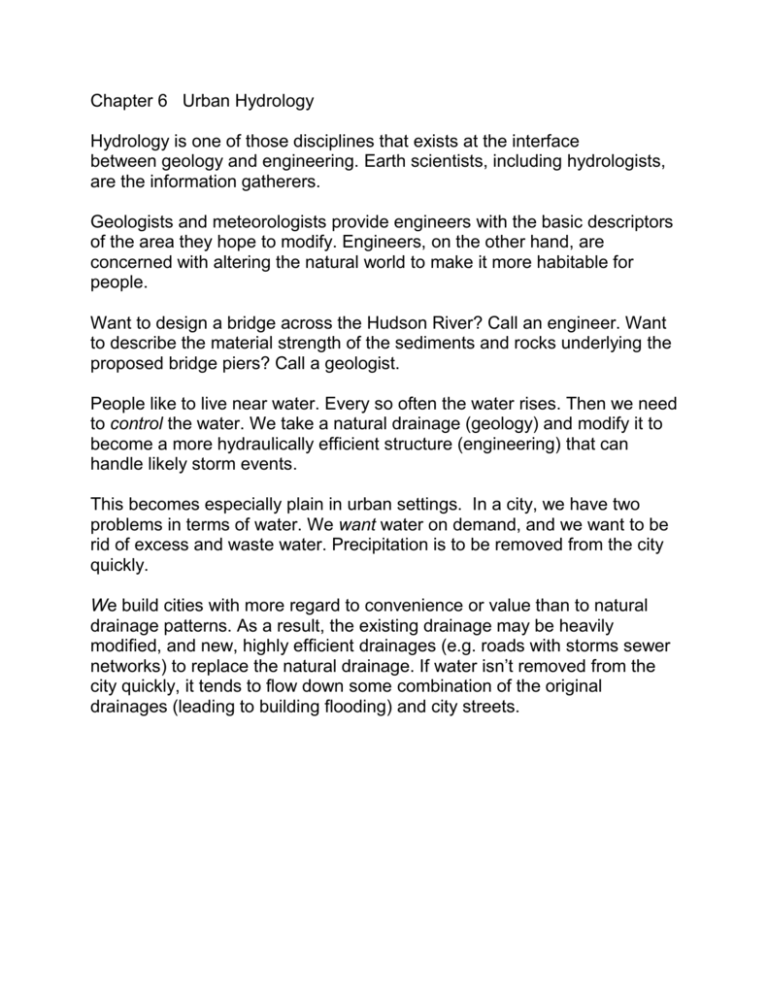
Chapter 6 Urban Hydrology Hydrology is one of those disciplines that exists at the interface between geology and engineering. Earth scientists, including hydrologists, are the information gatherers. Geologists and meteorologists provide engineers with the basic descriptors of the area they hope to modify. Engineers, on the other hand, are concerned with altering the natural world to make it more habitable for people. Want to design a bridge across the Hudson River? Call an engineer. Want to describe the material strength of the sediments and rocks underlying the proposed bridge piers? Call a geologist. People like to live near water. Every so often the water rises. Then we need to control the water. We take a natural drainage (geology) and modify it to become a more hydraulically efficient structure (engineering) that can handle likely storm events. This becomes especially plain in urban settings. In a city, we have two problems in terms of water. We want water on demand, and we want to be rid of excess and waste water. Precipitation is to be removed from the city quickly. We build cities with more regard to convenience or value than to natural drainage patterns. As a result, the existing drainage may be heavily modified, and new, highly efficient drainages (e.g. roads with storms sewer networks) to replace the natural drainage. If water isn’t removed from the city quickly, it tends to flow down some combination of the original drainages (leading to building flooding) and city streets. What’s typically done to combat this is to make drainages more hydraulically efficient, meaning that they’re capable of moving a lot of water quickly. Part of this is a byproduct of city construction. Cities make land more impervious to rainwater, so more is transmitted away quickly. Part of this is by design. We build a system of gutters and storm sewers to route water off streets and buildings. Sewers are generally unpressurized conduits, and (most often) route water back to the main drainage. This results in storm hydrographs that are significantly “peakier” than before urbanization. Cities have a complex system for moving water around. Water is brought into the city in pressurized water supply mains, and distributed to individual homes and businesses through a flow network. Water is returned to the natural drainage via an unpressurized sewer system that routes all flow into a central wastewater treatment plant, where it’s (hopefully) cleaned. Now for one problem. Back when eastern U.S. cities were first getting started, planners combined the stormwater sewer system with the wastewater sewer system. During dry periods, wastewater flows from industry and homes through an unpressurized pipe to a treatment plant, and out. However, when it rains the stormwater is added to this sewage. If the city’s wastewater treatment plant wasn’t designed to handle that amount of incoming wastewater, flow in excess of the amount the plant can handle is shunted directly to the outflow (a lake or river). This means that a combination of storm water and sewer water goes untreated into the river. One of the changes happening these days is an attempt to stop this from happening, and the easiest way to do this is to have separate stormwater and wastewater sewer lines. This is very expensive. There’s another problem with all this. What happens when the pipe itself isn’t big enough to handle the load? We’ve talked about these pipes as being unpressurized, and what that really means is that they’re not flowing full. Once the pipe flows full, it obeys a different set of rules. Specifically, it becomes a kind of Bernoulli problem. There’s a pressure head that may well extend above the water surface because of pressure in the pipe. When this situation happens, the pressurized flow seeks ways to release that pressure. One place is to flow back out through storm drains or manholes; another is to flow back up basement drains and into houses. Manhole covers are blown off by geysers of wastewater, basements flood, below-grade toilets overflow. This is a special problem in rapidly developing residential areas where the pace of development has overmatched the infrastructure designed for it. This is a big reason for zoning laws. Engineers need to design structures capable of handling the water we hydrologists predict. The engineer is designing the artificial drainage to do something in response to a big storm. Therefore, he or she needs to know something about how hard it will rain: what will happen before the structure is even built. In the case of sewer systems, engineers are told things like “ensure that this structure can handle the 25 year rainfall.” What is a design rainfall? One of the basic tools of urban rainfall analysis is something called an “intensity-duration-frequency” (IDF) curve. Note that this is a planning tool that attempts to say things about the likelihood of rain of a given intensity and duration occurring. For example, there’s a 20% chance in any year (meaning the 5-year event) of a 24-hour rainfall exceeding 0.305 in/hr in average intensity in Tallahassee, Florida. This can be used to produce a synthetic hyetograph using hyetograph distributions produced by SCS (p 133 and ff). These are based on previous experience about weather patterns. These synthetic rainfall events are the way sewer structure designs in particular are simulated.
